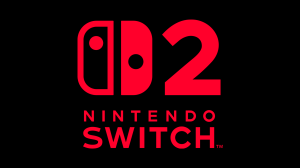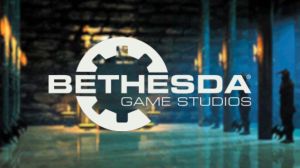The Legend of Zelda series is no stranger to reinvention. After all, the story revolves primarily around the reincarnation of Link, Zelda, and Ganondorf. Sequels are rarely seen, especially ones that continue the continuity. Each game typically starts from scratch, innovating with new ideas and settings to keep the series fresh. One major departure from this is The Legend of Zelda: Breath of the Wild and Tears of the Kingdom. This direct sequel breaks the trend, but it wasn’t the first time the Zelda series did this. I’m thinking of older games that formed the perfect Zelda trilogy we haven’t gotten again since.
Videos by ComicBook.com
The continuity of these games was a pleasant surprise. It gave me the chance to grow with the characters as well as get closure on key plot points. In a series where I seldom got to see characters across multiple adventures, The Wind Waker, Phantom Hourglass, and Spirit Tracks were a pleasant suprirse, one I love to this day.
The Wind Waker Set the Stage for a New Era

The Legend of Zelda: The Wind Waker may have been the most controversial game in the series. The cel-shaded art style was a massive departure from everything that came before, especially The Legend of Zelda: Majora’s Mask which was significantly darker in aesthetic and story. Two decades later, it is widely regarded as one of the best and most timeless games in the series. Wind Waker’s visuals were certainly a bold choice, but perhaps even bolder was its storytelling.
For the first time, the adventure did not start in Hyrule, but a strange flooded and submerged world. It would eventually be revealed as Hyrule 100 years after Ocarina of Time, but the appeal of a new setting was so intriguing to me. The game was even more fresh in its perspective, as it told not the story of a prophecized hero, but one that wishes to save his sister and discovers greatness along the way. Link becomes the Hero of Wind, though Wind Waker does tie into other games with its references and characters, such as the Hero of Time, Ganondorf, and Tetra who is a reincarnated Zelda.
Equally impressive to the narrative is Wind Waker’s world-building. From a quiet island to a massive sea, Link’s journey took me and other players on an incredible adventure. The whimsical story was rooted with loss and legacy, giving both the classic Nintendo charm and emotional depth. By blending these familiar aspects with a new direction, Nintendo solidified The Wind Waker as one of the most iconic games in the series. Nintendo reimagined The Legend of Zelda as a tale about moving forward while honoring the past, something that it followed up on in two sequels.
Phantom Hourglass Continued the Journey Seamlessly

The Legend of Zelda: Phantom Hourglass was a direct sequel to The Wind Waker, picking up almost immediately where it left off. Originally viewed as a spin-off due to the shift to the Nintendo DS, fans would later discover it was less of a spin-off and more of a key middle chapter. The continued sea-based travel of The Wind Waker followed Link and Tetra as they sought new land in this innovative title. It followed the familiar pair while introducing new characters, including the fan-favorite Captain Linebeck.
Nintendo continued its trend of experimentation with the series, and nothing shows this more than Phantom Hourglass’ gameplay mechanics. A heavy reliance on the stylus allowed players to draw routes for their ships, chart maps with notes, and even solve puzzles. This was combined with the classic gameplay fans loved from the series. Nintendo took full advantage of the Nintendo DS’ hardware to showcase the game’s ingenuity and expand on exploration.
Narratively, Phantom Hourglass enhanced what would become the trilogy’s central themes by deepening bonds between Link and Tetra while using the sea as a source of mystery. Nintendo made clever references to other literary tales, such as Oshus becoming a white whale similar to Moby Dick, that made it stand out even more. Thanks to its gameplay and narrative, The Legend of Zelda: Phantom Hourglass proved to be one of the best titles on the DS, but Nintendo wasn’t done yet.
Spirit Tracks Brought the Saga to a Satisfying Close

With The Legend of Zelda: Spirit Tracks, Nintendo made a drastic change from the previous two games. Instead of a seafaring adventure, fans were greeted with a kingdom connected by railways. There was some familiarity as travel was done with the stylus much as it was in Phantom Hourglass, but instead of drawing routes for ships, players laid down tracks. It felt like a natural progression, and while it was shocking at first, I learned to see it as symbolizing growth and renewal, two major themes of the series.
One of my favorite aspects of Spirit Tracks is how it included Zelda not just as a key part of the narrative, but in gameplay as well. Zelda could possess Phantoms and directly aid Link in battle. After years of being a damsal in distress, seeing Zelda contribute as a companion was so refreshing. This greatly benefitted the storytelling as I piloted the Spirit Train seeking to defeat Malladus. The story had its twists and turns, such as Byrne’s role in releasing Malladus and later aiding Link in stopping him, that solidified it as a worthy conclusion to this trilogy.
This conclusion tied together the trilogy’s theme of inheritance, courage, and growth. The same Link and Tetra may not have been present in Spirit Tracks, but 100 years later in the timeline, we could see the bond in their descendants. The gameplay relied on its past while striving forward to break new ground in the Legend of Zelda series, a partnership that felt fresh and meaningful without straying from the core pillars of the franchise.
To this day, I’ve yet to see Nintendo pull off the same thing in the Legend of Zelda. It seems unlikely we’ll get a third game to continue Breath of the Wild and Tears of the Kingdom. If it doesn’t go this route, I wouldn’t mind seeing another entry follow up on other games, but the future of Zelda is up in the air. Regardless of where Nintendo goes with the series, I can’t wait to see what happens. Until then, I have my fond memories of these three classic games to hold me over.
What do you think? Leave a comment below and join the conversation now in the ComicBook Forum!









